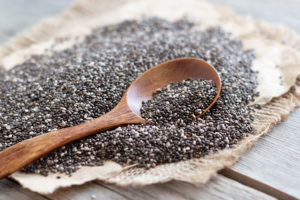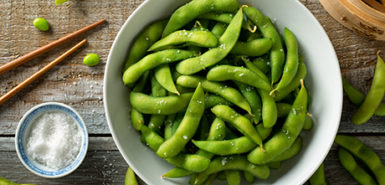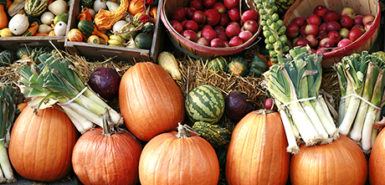
Had you mentioned chia seeds to someone back in the 1980s and ‘90s, it’s likely they would have envisioned a terra cotta creature sprouting thick, green locks.
And they probably would have busted out that iconic jingle, “Ch-ch-ch-chia!”
Times have changed, and with them the very meaning of the word “chia.” Today’s chia has more to do with growing healthy human bodies and less with gimmicky greenery.
You’ve almost certainly seen the little bags of chia seeds prominently displayed at the grocery store. They’re the same seeds you would have used to grow your Chia Pet.
Believe it or not, those tiny seeds pack some big nutritional benefits. Health aficionados caught on to this years ago, but the seeds have become increasingly mainstream. The chia seed market is expected to become a $1.5 billion industry in the next few years.
“It’s one of those hot foods items, where certain foods become big,” said Holly Dykstra, a cardiovascular dietitian in preventive cardiology and rehab at Spectrum Health.
And rightfully so: “Chia has been recognized as a really great host of all these nutritional benefits,” Dykstra said.
Despite the known health properties, chia seeds have not been extensively studied in human trials, so evidence is somewhat limited when it comes to an ability to reduce heart disease, diabetes or other chronic health conditions.
But indisputably, chia seeds are high in omega-3, whole grain, fiber, antioxidants, calcium, iron, magnesium and phosphorous.
Eating 2 tablespoons would provide you with 11 grams of fiber and more omega-3 fatty acids than you’d find in 3 ounces of salmon.
“It’s a great fat replacer, too,” Dykstra said. Chia seeds soaked in water will form a gel that can offset the amount of oil or egg used in baking recipes. They can typically replace about 25 percent of the oil or egg used in meatloaf, sauces, pastas or other dishes, Dykstra said. (An added bonus: This adds fiber to the recipe.)
The seeds also have a nutty flavor that goes well with cereal, sauces, stir fries, yogurt, smoothies and rice dishes. And unlike flaxseed, chia seeds don’t need to be ground because they’re absorbed quite well whole.
Dykstra said her patients are often interested in the nutritional and culinary properties of chia seeds and flaxseeds.
Foods often gain popularity when they are associated with the alleviation of medical conditions such as obesity, diabetes or heart disease.
There is no definitive evidence that chia seeds lead to weight loss, however, which means that for overall health, a well-balanced diet matters more than any single food.
That being said, chia seeds are still a great addition to a healthy diet, as they are chockfull of beneficial features. As noted, they contain omega-3, fiber and antioxidants, all of which are often lacking in the typical American diet.
Given their high fiber content, the seeds may cause some initial issues for someone whose diet is unaccustomed to such things. Dykstra suggests adding just 1 or 2 teaspoons a day, then gradually working up to about 2 tablespoons a day.
 /a>
/a>
 /a>
/a>
 /a>
/a>
Worth a try